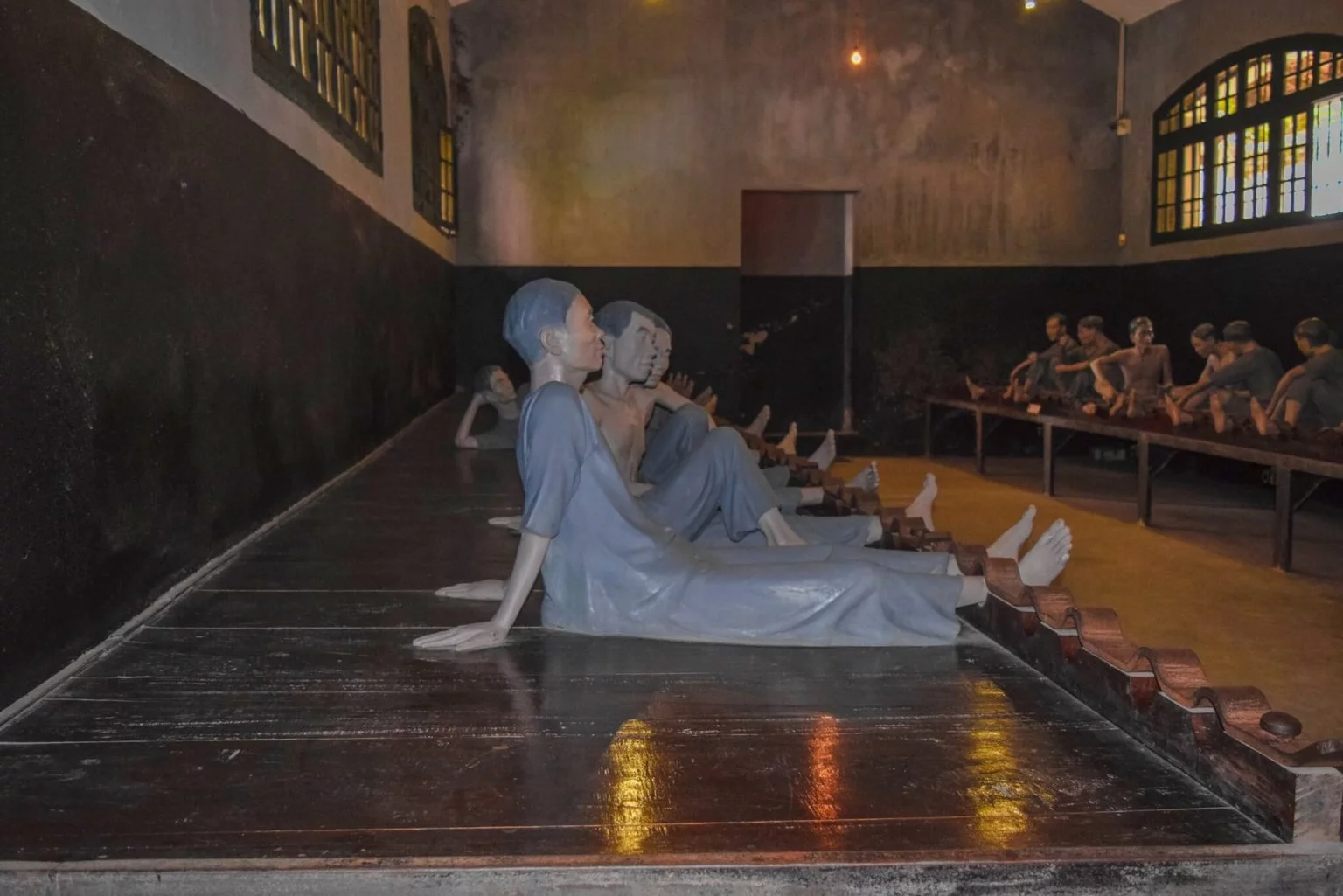
Welcome to Hoa Lo Prison, a significant historical site located in the heart of Hanoi, Vietnam. Also known as the “Hanoi Hilton,” Hoa Lo Prison offers visitors a profound and thought-provoking journey into Vietnam’s turbulent past. Join us as we explore the history, stories, and significance of this iconic landmark.
Originally built by the French colonialists in the late 19th century, Hoa Lo Prison was initially intended to detain political prisoners during Vietnam’s struggle for independence. However, the prison gained international attention during the Vietnam War when it was used to house American prisoners of war (POWs).
Step inside Hoa Lo Prison and embark on a haunting journey through its eerie corridors and cramped cells. The prison’s exhibits and displays provide a glimpse into the harsh conditions and brutal treatment endured by the inmates.
Explore the original cell blocks and witness recreated scenes that depict the daily lives of prisoners. From the “French era” section, which highlights the struggle for independence, to the “American era” section that focuses on the experiences of American POWs, each section offers a unique perspective on the prison’s history.
A significant portion of the prison is dedicated to showcasing the experiences of American POWs during the Vietnam War. Learn about the stories of resilience, bravery, and resilience of the prisoners who were held captive in Hoa Lo.
Exhibits include personal artifacts, photographs, and informative displays that shed light on the prisoners’ living conditions, their attempts at communication, and their eventual release. Gain insight into the challenges faced by both the prisoners and their captors, and reflect upon the complex narratives surrounding the war.
The term “Hanoi Hilton” was a sarcastic nickname given by American POWs to the prison during their captivity. Despite the difficult circumstances, the POWs formed a strong sense of camaraderie among themselves. The prison became a center for communication and resistance, as well as a symbol of resilience in the face of adversity.
While visiting Hoa Lo Prison, you can see remnants of the original prison walls and structures that have been preserved, providing a tangible connection to the past. Reflect on the prison’s historical importance and the enduring legacy it holds in the collective memory of the Vietnamese people.
Hoa Lo Prison now houses a museum that provides in-depth historical context and interpretation of the prison’s significance. The exhibits feature photographs, documents, and artifacts that offer a comprehensive understanding of the prison’s role in Vietnam’s struggle for independence and its impact during the Vietnam War.
The museum’s displays provide a balanced perspective, allowing visitors to form their own opinions on the prison’s history. Engage with the exhibits, read personal accounts, and gain a deeper appreciation for the resilience and determination of those who were incarcerated within its walls.
To make the most of your visit to Hoa Lo Prison, here are a few practical tips and information:
Hoa Lo Prison stands as a testament to Vietnam’s tumultuous past and offers a profound insight into the experiences of those who were confined within its walls. Visit this historically significant site to gain a deeper understanding of Vietnam’s struggle for independence and its role in the Vietnam War. By exploring the prison’s exhibits and engaging with its stories, you will leave with a greater appreciation for the resilience and strength of the human spirit in the face of adversity.
Subscribe to see secret deals prices drop the moment you sign up!
